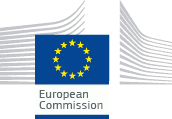Summary
The World Health Organization (WHO) defines malnutrition as ‘the cellular imbalance between supply of nutrients and energy and the body’s demand for them to ensure growth, maintenance, and specific functions.’ Malnutrition happens when the body does not receive enough energy or essential nutrients, but this condition is not confined only to the obviously undernourished; overweight and obese people can suffer it too.
Malnutrition is a worldwide problem. Nonetheless, the WHO considers that under-nutrition in the undernourished is the gravest threat to public health worldwide, being the biggest contributor for child mortality. Malnutrition not only represents a problem in the developing world, but also affects a large number of people in industrialised countries. In Europe alone, around 33 million people are at risk of malnutrition. Studies reveal that about one third of patients in hospital and nursing homes are at risk of under-nutrition, as are 10% of individuals over the age of 65 in the European Union. Older people living either alone at home or in nursing institutions are particularly vulnerable. Among other factors, appetite tends to decrease amongst this latter group, leading to reduced food and nutrient intake.
Malnutrition can result in poorer quality of life, increased mortality, as well as increased healthcare resources use and costs.
Health professionals have an important role in ensuring that patients meet their nutritional requirements while in hospital, yet the levels of knowledge and awareness of nutritional problems are low among caregivers. As a consequence, malnutrition remains under-recognised and under-treated, despite the existence of treatment guidelines. Often, nutrition therapy has no place within health and social care budgets.
Public health policies across Europe need to accommodate this fact and include measures to raise awareness about the importance of a varied and balanced diet for good health, and about the risks associated with poor nutritional intake in disease. Healthcare professionals need to acquire the awareness and necessary skills for assessing malnutrition (risk) – for which various tools are available, e.g. Mini Nutritional Assessment– and they need to be provided with adequate infrastructures to carry out screening and follow-up.
Demographic changes including population ageing are changing disease patterns and putting pressure on the sustainability of the EU health systems. By 2050 the number of people in EU aged 65+ will grow by 70% and the 80+ group will grow by 170%. It is estimated that the cost of malnutrition to the EU alone is a staggering 120 billion Euros per year. Therefore, reducing the burden of malnutrition in Europe will result in lower health care costs in the long term, and will improve the quality of life for many.
FlashDiet project will tackle the malnutrition problem at two levels: a) at a short-medium term, by creating a massive open online course implementing a specialised educational program for healthcare professionals and informal carers focused on the detection, prevention and correction of malnutrition at all ages, but putting a special focus on elderly, which increases their competences and skills; and b) at a medium-long term by creating a series of tools that can be used to support public awareness campaigns promoting healthy habits, with special focus on adequate nutrition and physical activity, addressed to all population segments.
The project will define a set of indicators to measure the impact and effectiveness of both approaches individually.
Finally, FlashDiet will exploit the relationship between the consortium partners and the EIP-AHA reference site La Fe in Valencia (Spain) to reach a European level of dissemination and transferability of project outcomes.
The project is funded by
European Commission – DG Health and Food Safety

